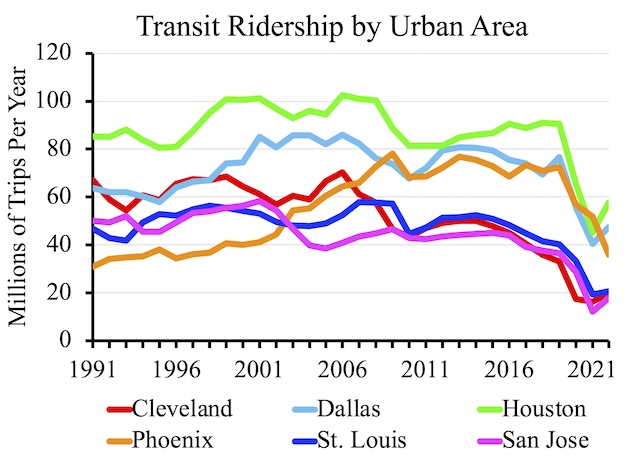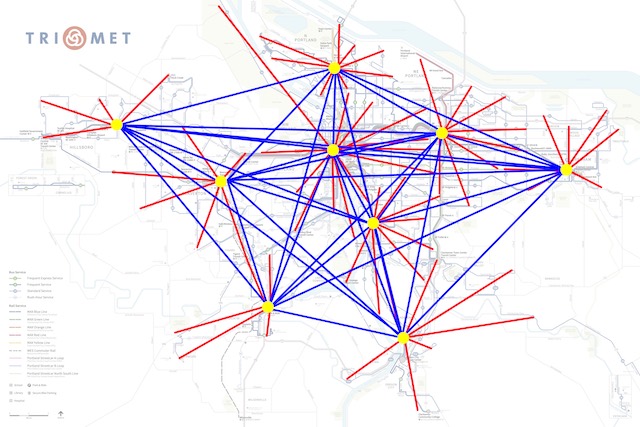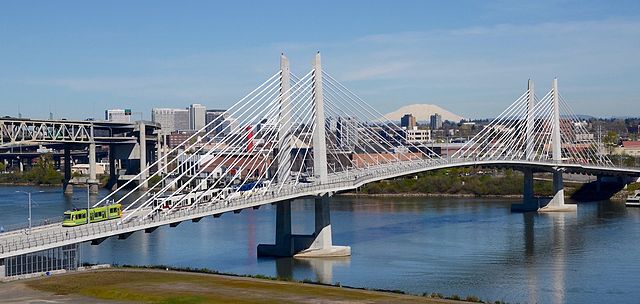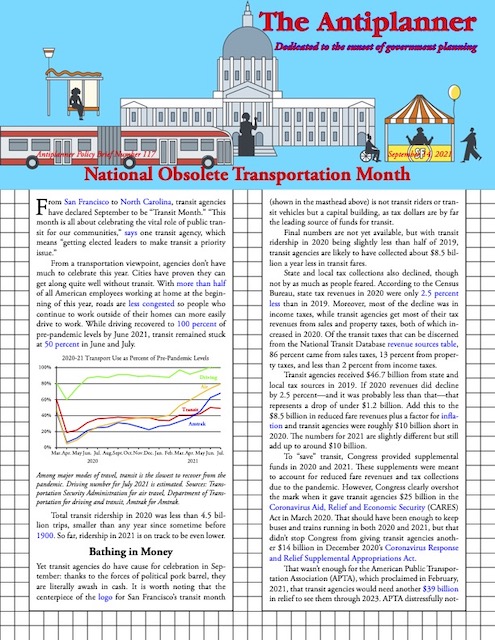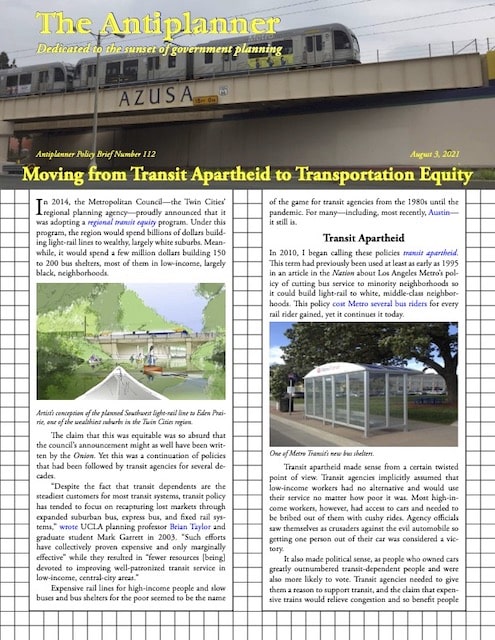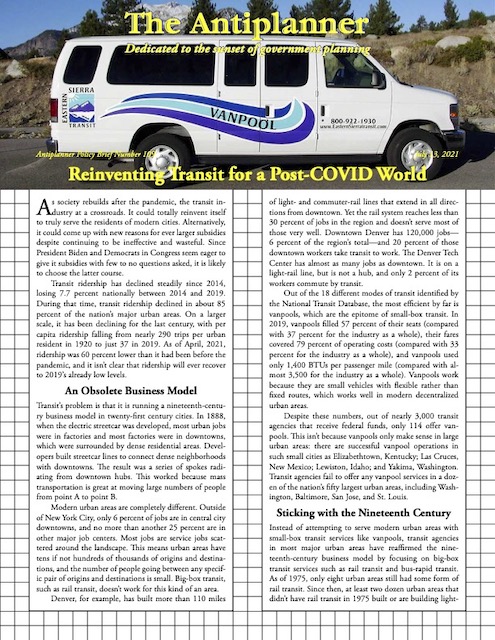Portland’s transit agency, TriMet, “knows the key to increasing ridership is offering more frequent bus service.” But, guess what, the agency is devoting all of its resources to building rail lines that hardly anyone will ride. So the only way it will actually be able to increase ridership is to get a tax increase.
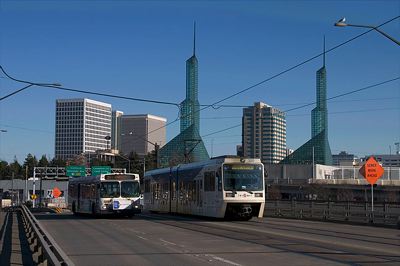
Portlanders voted against expanding the convention center (the twin glass towers), but the city expanded it anyway and now is mostly empty. Portlanders voted against expanding the light-rail system, but TriMet expanded it anyway, and now it says it doesn’t have enough money to improve bus service. (I think the high rise visible between the twin glass towers was also subsidized — JK will know for sure.)
Flickr photo by ahockley.
TriMet is funded out of an “employee tax” (it’s really an income tax, but it doesn’t appear on people’s paychecks as a payroll deduction, so most people other than employers aren’t aware of it) that is scheduled to increase over the next decade.

